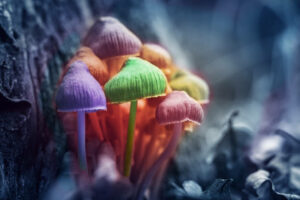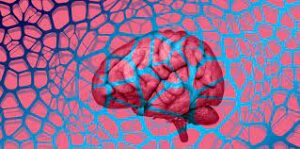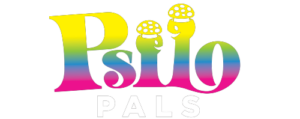Notable Elements
Origins & Structure:
- Psilocybin: Naturally occurring in mushrooms; converted to psilocin when ingested.
- LSD: Man-made, derived from ergot fungus; known for potency.
Duration & Effects:
- Psilocybin: Trip lasts 4-6 hours with altered perception and emotional amplification.
- LSD: Experience lasts 8-12 hours, with visual hallucinations and profound introspection.
Therapeutic Potential:
- Psilocybin: Shows promise for treating depression, anxiety, PTSD, and addiction.
- LSD: Studied for potential benefits against anxiety, alcoholism, and depression.
Legality in Canada:
- Psilocybin: Classified as Schedule III; limited legal exemptions for end-of-life care.
- LSD: Classified as Schedule I; production, distribution, and possession are illegal.
Safety & Toxicity:
- Both have a low potential for physical addiction. Main risks are psychological.
Cultural Context:
- Psilocybin: Used historically in indigenous religious and spiritual ceremonies.
- LSD: Central to the 1960s countercultural movements.
Mechanism of Action:
- Both primarily interact with the brain’s serotonin system, affecting mood and perception.
Microdosing:
- Sub-perceptual doses are said to improve mood, creativity, and focus.
Integration:
- The post-trip reflection process crucial for understanding and assimilating psychedelic insights.
Introduction
Psychedelics, once relegated to the fringes of society and perceived as mere recreational substances, have experienced a renaissance in the world of scientific research, mental health, and spiritual exploration. Two of the most recognized and researched psychedelics are psilocybin, found in magic mushrooms, and LSD (lysergic acid diethylamide). Both substances have been central to the human experience for decades (or even centuries, in the case of psilocybin). This article aims to dissect their similarities and differences, from chemical structure to therapeutic potential.

1. Origins & Chemical Structure
Psilocybin: This naturally occurring compound is found in over 180 species of mushrooms. Psilocybin is a prodrug, which means it gets converted into its active form, psilocin, once ingested.
LSD: Synthesized in 1938 by Swiss chemist Albert Hofmann, LSD is a man-made compound derived from ergot, a fungus that grows on rye. Its chemical structure is complex and is known for its potency; even micrograms can produce pronounced effects.
2. Duration & Effects
Psilocybin: A typical psilocybin trip lasts between 4 to 6 hours. Effects include altered perception of time, vivid hallucinations, emotional amplification, and feelings of interconnectedness.
LSD: An LSD experience can last anywhere from 8 to 12 hours. Its effects, similar to psilocybin, include visual hallucinations, distortions in time perception, and profound introspective insights. Some users report more “synesthetic” experiences with LSD, such as “hearing colors” or “seeing sounds.”
3. Therapeutic Potential

Psilocybin: Recent studies have shown psilocybin’s potential in treating depression, anxiety, PTSD, and addiction. The FDA granted “breakthrough therapy” designation to psilocybin for treatment-resistant depression in 2019. It’s believed that psilocybin helps “reset” certain neural circuits, allowing for improved emotional and cognitive flexibility.
LSD: LSD has been studied for its potential in treating anxiety, alcoholism, and depression. Preliminary studies suggest that it might help promote neuroplasticity and enhance creativity. Its longer duration might be both a challenge and an advantage in therapeutic settings.
4. Legality
Psilocybin: In Canada, psilocybin and psilocin are classified as Schedule III substances under the Controlled Drugs and Substances Act (CDSA). This means the production, distribution, and possession of these substances are illegal. However, there have been some significant developments in this area. In August 2020, the Canadian Minister of Health granted an exemption to certain terminally ill patients, allowing them to use psilocybin as part of their end-of-life care. Additionally, there is growing advocacy for further decriminalization or legalization, particularly for therapeutic use.
LSD: LSD is classified as a Schedule I substance under the CDSA, putting it in a more restricted category than psilocybin. The production, distribution, and possession of LSD are illegal and can result in severe penalties. However, like with psilocybin, there is a burgeoning interest in researching the therapeutic potentials of LSD, which might influence its legal status in the future.
5. Safety & Toxicity
Psilocybin: Generally considered to have a low potential for abuse and addiction. Overdoses are rare, and the main concerns are psychological, such as bad trips or exacerbation of pre-existing mental health conditions.
LSD: Also possesses a low potential for physical addiction or toxicity. However, its potent nature means that “set and setting” (the user’s mindset and environment) are crucial to avoid adverse psychological reactions.
6. Cultural & Historical Context
Psilocybin: Used for centuries, if not millennia, by indigenous communities in religious and spiritual ceremonies. The Mazatec people of Mexico, for instance, have a long history of using psilocybin mushrooms in shamanic rituals.
LSD: While not ancient, LSD played a significant role in the countercultural movements of the 1960s. It became associated with anti-establishment ideologies, leading to its criminalization. Notably, famous personalities like Steve Jobs attributed some of their creativity and insights to LSD experiences.
Also Read- History of Magic Mushroom.
7. Mechanism of Action
Psilocybin: When ingested, psilocybin is converted to psilocin, which affects the brain’s serotonin receptors, especially the 5-HT2A receptor. This receptor modulates the release of neurotransmitters and affects mood, cognition, and perception. By binding to these receptors, psilocin alters the usual patterns of serotonin transmission, leading to changes in mood, perception, and cognition.
LSD: Like psilocybin, LSD primarily interacts with the serotonin system. However, it binds to even more receptor types than psilocybin. This broader range of interaction could explain the diverse and intense effects associated with LSD. Additionally, LSD is known to stimulate dopamine receptors, which might be responsible for some of its stimulating effects.
8. Set & Setting
Psilocybin: Given its rich history in ritualistic settings, the ideal environment for a psilocybin experience often tends towards calm, controlled, and introspective spaces. This is especially crucial in therapeutic settings, where a supportive environment can significantly influence the trip’s positive outcome.
LSD: Due to its longer duration and intense effects, ensuring a comfortable setting for an LSD experience is crucial. Many users prefer nature settings or comfortable indoor environments, often accompanied by music. In therapeutic sessions, a trusted guide or therapist can help navigate and interpret the experience.
9. Microdosing
Psilocybin: Those who microdose with psilocybin often report enhanced creativity, improved mood, and increased focus. It’s believed to provide a subtle lift in one’s day-to-day activities, potentially aiding in problem-solving and emotional balance.
LSD: LSD microdosing has been praised for similar reasons. Silicon Valley techies, in particular, have championed its potential to boost productivity and foster innovative thinking.
10. Integration
Psilocybin: Post-trip integration can be vital, especially for those using psilocybin for therapeutic reasons. Working with a therapist or a support group can help users make sense of their experiences and implement positive changes in their lives.
LSD: Given its profound and sometimes overwhelming effects, integrating an LSD trip can be a more extended process. Users might grapple with existential questions, new perspectives on personal issues, or heightened creativity. As with psilocybin, guided integration can help in assimilating these insights.
11. Future Prospects
Psilocybin: As more jurisdictions move towards decriminalization and legalization, psilocybin therapy could become a standard treatment for various mental health conditions. Its natural origin might also make it more acceptable to certain users.
LSD: While its reputation from the 1960s might make its widespread acceptance slower, the undeniable potential of LSD in therapy and personal growth contexts is pushing researchers to explore it further.
Conclusion
The realms of psilocybin and LSD, though intertwined in many aspects, are vast and unique in their own rights. From their distinct chemical structures and origins to their potential applications in modern medicine and personal development, these substances hold a wealth of possibilities. As our understanding deepens and societal perceptions evolve, it’s clear that the next chapters in the stories of psilocybin and LSD will be ones of discovery, acceptance, and growth.

Hi! I’m Jacob Hawthorne, a passionate medical student dedicated to exploring the fascinating world of psychedelics, particularly magic mushrooms (commonly known as shrooms). With a deep interest in their therapeutic potential and profound effects on the human mind, I aim to provide accurate and evidence-based information about shrooms in the Canadian context.

